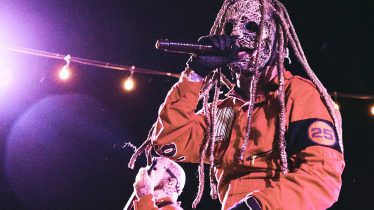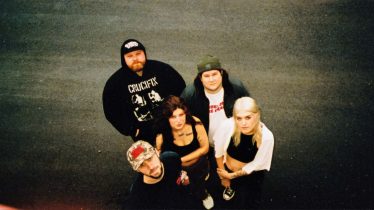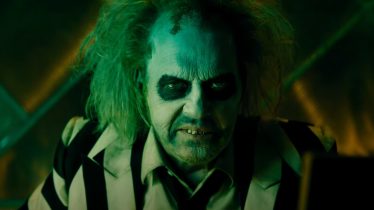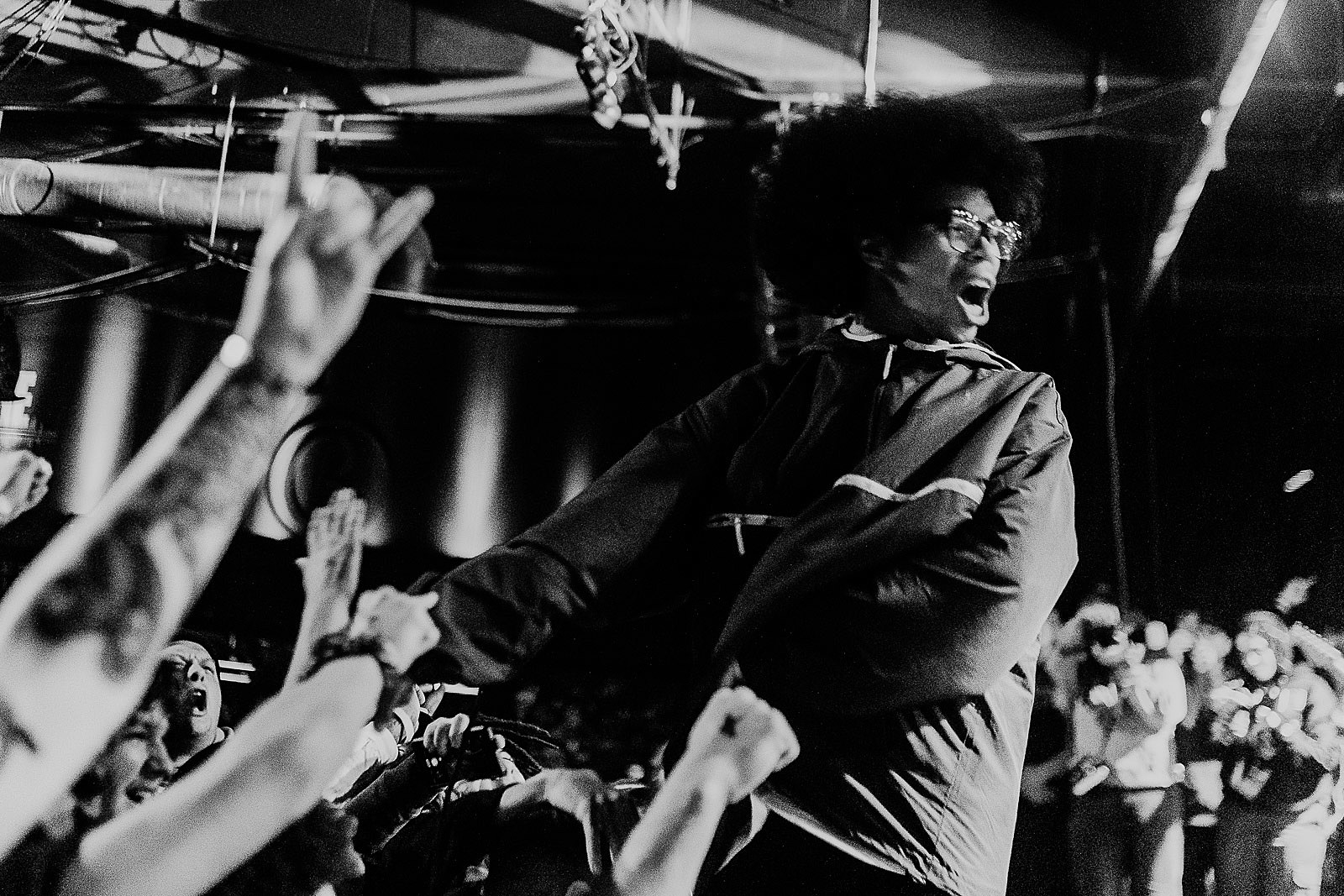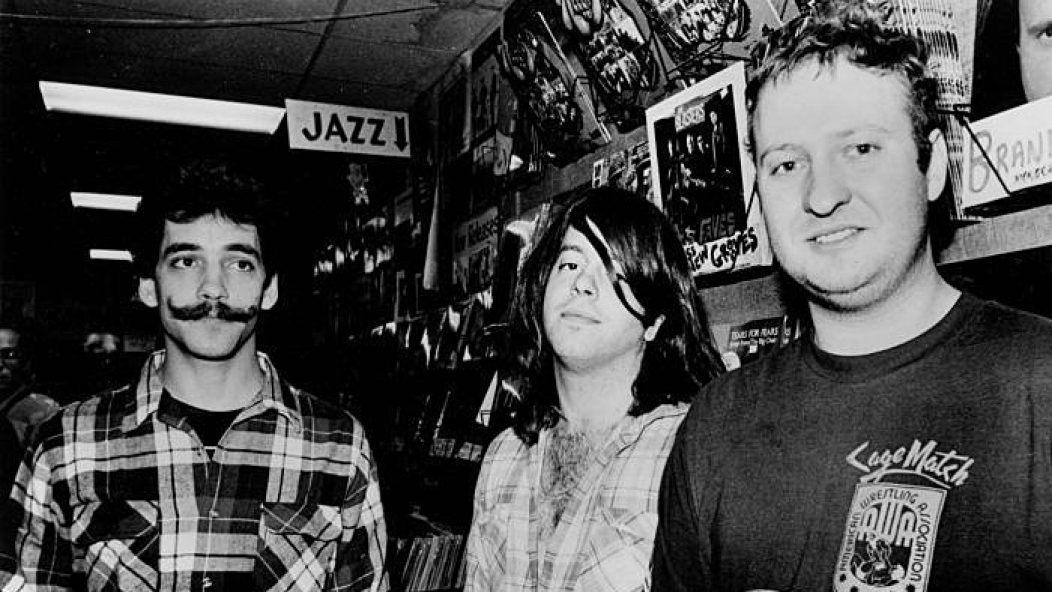
How Minneapolis’ punk scene foreshadowed alt-rock, grunge and pop punk
Minneapolis: The state of Minnesota’s most densely populated city. It sits back to back with the state capital, St. Paul, forming what’s known as the Twin Cities. It also gets really freakin’ cold up there. So it naturally produced a huge crop of punk bands at one time, all seemingly falling out of clapped-out Ford Econolines clad in flannel shirts when “grunge” was something you cleaned out of a grease trap. After all, when you’re snowed in half the year, what better way to generate some heat than piling into your basement with a few of your buddies, some six-packs and some guitars, amps and drums? It’s as all-American as bowling and barbecues.
Which is why it should surprise no one that Minneapolis punk tradition extends to the ‘60s and the garage era. The Trashmen were a weird landlocked surf outfit formed in 1962. The following year, they rode a manic, trashy mashup of the Rivingtons’ ‘50s R&B hits “The Bird’s The Word” and “Papa-Oom-Mow-Mow” to No. 4 on the Billboard Hot 100. You know “Surfin’ Bird” from a Family Guy episode and perhaps from covers by the Ramones and the Cramps, among endless others. Two years later, it was the Castaways’ turn for their That Thing You Do! moment. The vehicle? “Liar Liar,” a strange Farfisa organ-and-falsetto chant that barely came in under two minutes. It reached No. 12 on the same Billboard chart.
Read more: Punk hero Bob Mould on touring, staying healthy and keeping others safe
Already Minneapolis had genetic material woven through Nuggets. So it wasn’t unusual for punk to begin roaring there, as it did in every major metropolis worldwide in 1975, out of the same groups of Nuggets/New York Dolls/Stooges-loving misfits found everywhere then. They’d be nurtured by Peter Jesperson’s carefully curated stock at Oar Folkjokeopus, the friendly neighborhood record shop at 26th Street and Lyndale Avenue. Jay’s Longhorn Bar, or simply the Longhorn, became the local CBGB analog, offering a stage to touring punk and new-wave acts. It equally hosted local luminaries such as Talking Heads-esque art-popsters the Suburbs and lunatic, Waring blender trash-rockers the Hypstrz.
Welcome to Alternative Press’ brief history of Minneapolis punk from 1976 to 1989. Please enjoy our custom playlist as you read.
The Suicide Commandos
Really, Twin Cities punk begins here. Jesperson remarked that he and the rest of Oar Folk’s staff were deeply puzzled when they received a promo record of the first Ramones album: “We all thought it was oddly similar to what the Suicide Commandos had been doing.” Even the Commandos — singer/guitarist Chris Osgood, eventually guitar tutor to locals ranging from Bob Mould to Dave Pirner, singer/bassist Steve Almaas and singer/drummer Dave Ahl — marveled at the resemblance. But really, the way they processed the basic Detroit protopunk sound was more involved and musicianly than Johnny, Joey, DeeDee and Tommy.
It still displayed the same comic book sense of humor, though. Their 1978 debut LP, Make A Record, arrived to almost universal apathy, save within Minneapolis’ city limits. They flamed out spectacularly one year later, despite intermittent reunions since 1996. A second studio set, Time Bomb, dropped in 2017. Osgood’s leather jacket was added this past summer to the Smithsonian’s National Museum of American History’s collection of musical artifacts.
Twin/Tone Records
Jesperson, local recording engineer Paul Stark and St. Paul Pioneer Press music journalist Charley Hallman began Twin/Tone Records in 1977 to release local singles and generally boost Minneapolitan punk and new wave. “We were there super early and did a lot to help it develop,” Jesperson recollected in a 2005 Magnet magazine Minneapolis retrospective. “The label was almost forced into being by the sheer number of good bands in the area.” His discovery of the Replacements in 1980 certainly did much to put both the band and the label on the map.
From releasing early Suburbs and Curtiss A singles and the Suicide Commandos’ farewell album, The Commandos Commit Suicide Dance Concert, Twin/Tone eventually amassed a catalog of 300 records by 100 bands by 1994. This encompassed both Twin Cities royalty such as Soul Asylum and such international alt-rock sensations as Robyn Hitchcock and the Mekons. Twin/Tone became one of America’s classic indie labels. Interesting fact: The label’s HQ at 2541 Nicollet Ave. was the location of Kay Bank Studios, where “Surfin’ Bird” and “Liar Liar” were recorded in the ‘60s.
Hüsker Dü
Alongside the Replacements, Hüsker Dü are one of the two incandescent talents that put Minneapolis on the map in the ‘80s, Prince notwithstanding. Singer/songwriter/guitarist Mould, singer/songwriter/drummer Grant Hart and bassist Greg Norton possessed a scary work ethic, constantly touring, and had a nonstop compositional rigor. They helped put hardcore on the map with the aggressive high-speed atonality of live debut album Land Speed Record.
By such mid-‘80s releases as New Day Rising, Mould and Hart moved onto a ringing, ‘60s-inflected melodic punk sound, like Buzzcocks on a bender in an abattoir. They imploded by 1987, following two albums on major label Warner. Mould went on to ‘90s alt titans Sugar and solo success, as Hart moved to his own solo work and the band Nova Mob until his 2017 death. After many years as a chef and restaurateur, Norton returned to music in 2006, currently playing bass in Porcupine.
The Replacements
One drunken night walking home from work, a janitor named Paul Westerberg who wrote songs and played a little guitar overheard a band called Dogbreath rehearsing in a basement. They played Ramones-speed covers of odd things such as Yes’ “Roundabout.” Impressed, he introduced himself to 19-year-old dipsomaniac guitarist Bob Stinson and his 12-year-old bass-playing brother Tommy Stinson. Westerberg already knew drummer Chris Mars. He convinced them they needed him and his songs — heart-on-sleeve rockers featuring such trenchant lyrics as “You’re in love, and I’m in trouble.”
With the elder Stinson’s gonzo guitar work powering through Westerberg’s increasingly sophisticated and heartfelt compositions, driven by the manic Tommy/Mars rhythm section, the Replacements developed a sloppy bar-band punk that was equal parts Faces and Johnny Thunders. They became notorious for alcohol-drenched performances that could deteriorate into 40 haphazard covers of the worst songs they could dredge up on the spot. Then Westerberg could turn around and mortally wound you with another aching couplet, such as “How do you say ‘I miss you’ to an answering machine?/…I hate your answering machine.” It was no wonder the Replacements became one of the ‘80s underground’s most beloved and influential bands.
Your Flesh fanzine
Peter Davis and Ron Clark began Your Flesh in 1981 to cover the rise of hardcore in Minneapolis. Which at the time numbered not just Hüsker Dü but artists such as Todlachen, Rifle Sport, Red Meat, Loud Fast Rules, Man Sized Action and other denizens of local hardcore palace Goofy’s Upper Deck. Davis in particular wrote in a comically abrasive style filled with acute, perceptive analysis of music and art. He had a knack for finding writers sharing similar sensibilities as the fanzine lived far past the hardcore moment. It offered comprehensive coverage of grunge, noise, garage and other alternative sounds/cultures as it lived into the next century. Davis himself became one of underground rock’s best booking agents via his Creature Booking.
Soul Asylum
Beginning as hardcore trio Loud Fast Rules in 1981, the evolution into Soul Asylum saw lead vocalist/drummer Dave Pirner assuming rhythm guitar duties, vacating his drum stool for Pat Morley. Guitarist Dan Murphy and bassist Karl Mueller stayed put. Finding a home at Twin/Tone, they developed their own swaggering rock ‘n’ roll sound that seemingly found the middle ground between the Replacements and Hüsker Dü, especially after replacing Morley with Grant Young. 1986’s Made To Be Broken proved a new mid-’80s Minneapolis sound was in place. It jangled and crunched at once, filled with punk drive and angst. At the same time, it exercised smarter, advanced songwriting — less political, more introspective. It paid off for Soul Asylum with 1992’s triple-platinum Grave Dancers Union, featuring the Grammy-winning hit “Runaway Train.” The band exist to this day and numbered Tommy Stinson among its membership for a time.
The Magnolias
Singer/guitarist/songwriter John Freeman formed the Magnolias in 1984, and he still leads a version of the band to this day. They were certainly exemplars of the mid-’80s Minneapolis sound, though they betrayed more the influence of such first-wave Britpunks as the Clash, the Jam and Buzzcocks. Hart produced their 1986 Twin/Tone debut Concrete Pillbox, though 1988’s For Rent featured a more full-bodied roar. Freeman writes some real anthems such as “Walk A Circle,” somehow marrying Westerberg’s instincts with those of U.K. ‘77 punk’ more advanced songwriters, such as the Jam’s Paul Weller and the Only Ones’ Peter Perrett. 2011’s Pop The Lock, their last full-length, sounds as brisk as For Rent.
Halo Of Flies
Larger-than-life ex-Marine Tom Hazelmyer had been through Todlachen and Otto’s Chemical Lounge by the time he unleashed the abrasive grind-punk of Halo Of Flies in 1986. The highly physical, anti-intellectual, rampaging post-hardcore that screamer/guitarist Hazelmyer produced with bassist Tim Mac and drummer John Anglim stood in complete opposition to not only Replacements/Husker/Soul Asylum jangle-punk but to anything “alternative” for years to come. Equal parts ‘60s freakbeat, hardcore and Jimi Hendrix in hell, HOF highlights such as “Headburn” and “No Time” felt like the MC5 getting tortured. In the process, they created a potent new American underground rock sound.
Amphetamine Reptile Records
Begun by Hazelmyer out of a hand grenade crate kept under his Marine Corps bunk while stationed in Seattle, Amphetamine Reptile Records was initially intended to release Halo Of Flies records. (Hazelmyer: “It was tens of dollars involved in it, at that time.”) Soon friends’ bands began asking him to release their records — friends such as Mudhoney and the Melvins. After returning to Minneapolis and signing a pressing and distribution deal with Twin/Tone, Hazelmyer amassed a roster of some of the most extreme, visceral rock bands in existence, from Minneapolis and beyond — Cows, Killdozer, God Bullies and more.
In the ‘90s, they introduced math metallicists Helmet to the world; the 40,000 copies AmRep sold of their Strap It On kept the label afloat for years. Releasing Nashville Pussy’s Grammy-nominated Southern punk-metal classic Let Them Eat Pussy certainly didn’t hurt AmRep’s reputation for innovation, either. It still exists as a conduit for limited-edition vinyl releases featuring Hazelmyer’s lithographic work for covers — records as art objects.
Babes In Toyland
Begun by singer/guitarist Kat Bjelland, drummer Lori Barbero and bassist Michelle Leon in 1987, Babes In Toyland always sounded like a band who should have been on AmRep. They created a delightfully hideous caterwaul centered around Barbero’s tribal pounding and Bjelland’s grimy, ultra-fuzz guitar and tonsil-shredding roar. Their corrosive blast and fuck-you feminism preceded both grunge and riot grrrl, enabling them to participate in both when they arrived. Even signing with Warner couldn’t blunt their all-edges attack. Second album Fontanelle and its lead single “Bruise Violet” made alterna-rock stars out of them. Still some of the Twin Cities’ finest grind.
